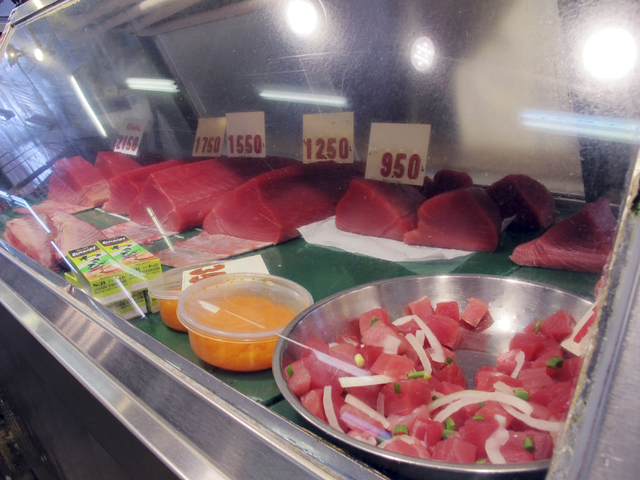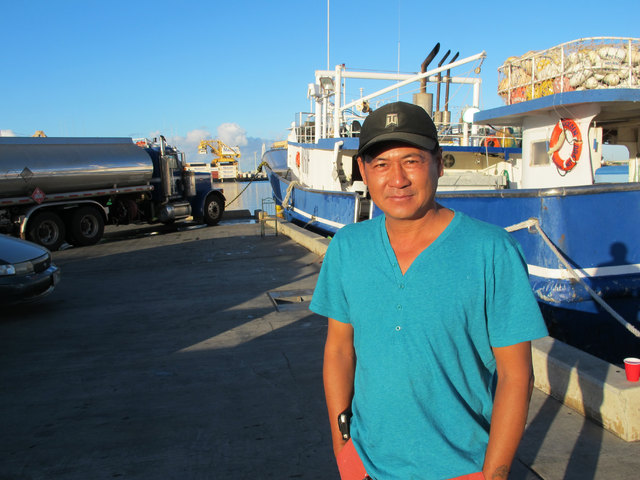HONOLULU — Hawaii’s longline fishermen are on course to hit their annual bigeye tuna catch limit next week, which means they will have to stop catching bigeye in their most productive fishing grounds west of Hawaii on Aug. 5. ADVERTISING
HONOLULU — Hawaii’s longline fishermen are on course to hit their annual bigeye tuna catch limit next week, which means they will have to stop catching bigeye in their most productive fishing grounds west of Hawaii on Aug. 5.
Hawaii fishermen will still be able to catch bigeye in eastern waters regulated by a different fisheries commission.
Last year fishermen continued catching bigeye after they hit their quota in November because federal authorities drafted rules allowing them to attribute some catch to U.S. territories.
But Mike Tosatto, Pacific Islands regional administrator for the National Oceanic and Atmospheric Administration’s fisheries service, said officials haven’t yet had time to draft similar rules for 2015.
The 26-member nation Western and Central Pacific Fisheries Commission, which regulates fishing from east and southeast Asia to waters around Hawaii, set a limit of about 3,500 metric tons for Hawaii longline fishermen this year. That’s about 7 percent less than last year.
The smaller limit contributed to fishermen reaching the limit three months earlier this year than last. But Tosatto said the longline fleet has also had an exceptional year, catching more and bigger fish.
Hawaii fishermen account for only 1.6 percent of the bigeye caught in the western and central Pacific. So the closure of these waters to Hawaii’s fishery won’t affect global market supply and prices. Hawaii consumers tend to prefer their own fishermen’s tuna, though, because it’s fresher.
Last week, some fishermen were rushing out to sea for quick trips before the fishery hit the limit. Others lamented the effect the closure will have on their livelihoods.
“Everybody is suffering. They don’t have money to pay rent, to feed their kids. So they all worry about that,” fishing boat captain Hoai Dang said as fish auction workers unloaded bigeye and mahimahi from boats around him. “It’s hard for us.”
Tosatto said his agency was working as quickly as it can to prepare regulations allowing Hawaii fishermen to attribute their bigeye catch to territories. He didn’t have an estimate for how long this would take.
Several environmental groups say attributing catch to territories — which allows Hawaii fishermen to effectively double their catch — is illegal and have sued to stop the practice.
“They should follow the rules,” said the groups’ attorney, David Henkin of Earthjustice. “And one of the rules is fishing less. Because if we don’t all fish less, then there aren’t going to be any fish.” A federal judge in Honolulu will hear the case in September.
The commission established the catch limits to address overfishing in the western and central Pacific, where about 40 percent of the global supply of bigeye is caught.
Bigeye is one of two types of tuna known as ahi. The other is yellowfin.




